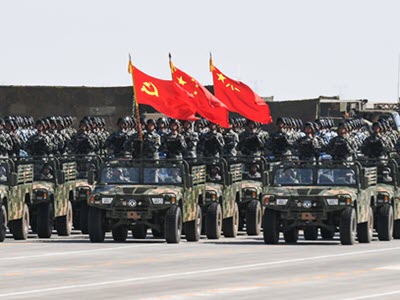The 2022 China Military Power Report: A View from Japan
In November 2022 the U.S. Department of Defense released its annual report Military and Security Developments Involving the People’s Republic of China. The report, commonly known as the China Military Power Report, assesses the current trajectory of the PRC’s military and security strategy. Since the report’s release, China has continued to modernize its military capabilities and publicly surveil foreign competitors, presenting a clear risk to the United States and its allies and partners.
The comments below are from Kei Koga, Associate Professor in the Public Policy and Global Affairs Programme in the School of Social Sciences at Nanyang Technological University in Singapore.
For comments on China’s rising military power by experts from other countries across the Indo-Pacific, see Regional Voices on the 2022 China Military Power Report.
Kei Koga
Nanyang Technological University
The U.S. Department of Defense’s 2022 China Military Power Report resonates with Japan’s current strategic thinking, as evinced by its new National Security Strategy released in December 2022. While the China Military Power Report states that China aims to “revise the international order in support of Beijing’s system of governance and national interest” and is now acquiring such a capacity, the National Security Strategy refers to China’s military activities in the region as “unprecedented and the greatest strategic challenge” for Japan’s security, as well as for the stability of the existing international order. The China Military Power Report raises three points that are particularly important for Japan.
The first point is China’s modernization of its nuclear arsenal, which potentially undermines the extended nuclear deterrence that the United States has long provided its allies in East Asia, including Japan. According to the report, China is on track to increase its nuclear warheads up to 1,500 by 2035 and expand its arsenal of long-range intercontinental ballistic missiles, including multiple independently targetable reentry vehicles. At the same time, by locating its sea-launched ballistic missiles in the South China Sea and Bohai Gulf, China could overcome its relative nuclear disadvantage vis-à-vis the United States in the medium term. China’s more capable long-range strike capabilities against the United States would change the existing credibility of U.S. extended deterrence and substantially alter the strategic balance. In this context, Japan has recognized the essential role of the U.S.-Japan alliance, as shown by its willingness to frequently consult with the United States and clarify its defense role.
The second point is the consistent increase in China’s assertive presence in the maritime domain, particularly the East China Sea. While conducting influence operations to construct narratives to justify its behavior, China directs the PLA Navy, China Coast Guard, and maritime militias to harass and disrupt Japan in the East China Sea, including around the Senkaku Islands. For this reason, Japan closely monitors institutional reforms spearheaded by Xi Jinping that will enable more integrated maritime operations and allow China to coordinate military and nonmilitary means to encroach on Japan’s maritime territories. In this context, the United States’ continued reiteration that Article 5 of the U.S.-Japan mutual security treaty covers the islands administered by Japan serves as reassurance, especially amid concerns about China’s gray-zone operations.
The third point is the increasing immediacy of threats to stability in the Taiwan Strait. Although the strategic benefits of an invasion of Taiwan are unlikely to outweigh the costs, China’s lack of transparency does not provide sufficient information about its intentions under Xi. As a result, the China Military Power Report indicates that the course of China’s military development is aimed at preparing for a potential Taiwan contingency. Japan agrees with this assessment. Its new National Security Strategy equates Japan’s concerns about the stability of the Taiwan Strait with those of the entire international community.
Overall, Japan shares the same strategic concerns expressed by the China Military Power Report. Although its detailed defense plan and cooperation in critical areas need to be further discussed with the United States and other security partners, Japan is already actively engaging with the United States through the U.S.-Japan Security Consultative Committee (“2+2”). This commitment was underscored at the January 2023 summit meeting in Washington, D.C., between the two allies. Further enhancement of military cooperation is therefore expected.
Kei Koga is Associate Professor in the Public Policy and Global Affairs Programme in the School of Social Sciences at Nanyang Technological University in Singapore and the author of the book Managing Great Power Politics: ASEAN, Institutional Strategy, and the South China Sea (2022).


